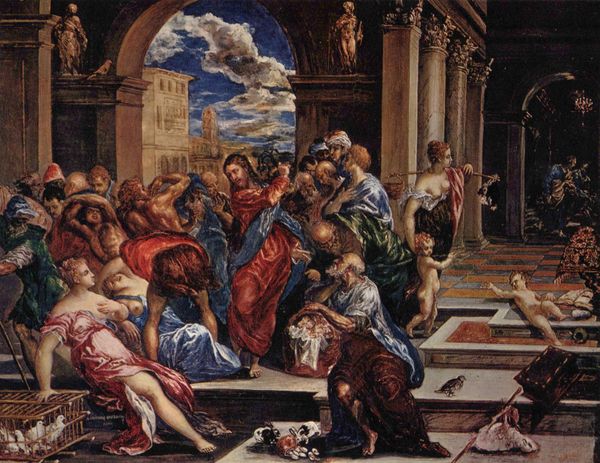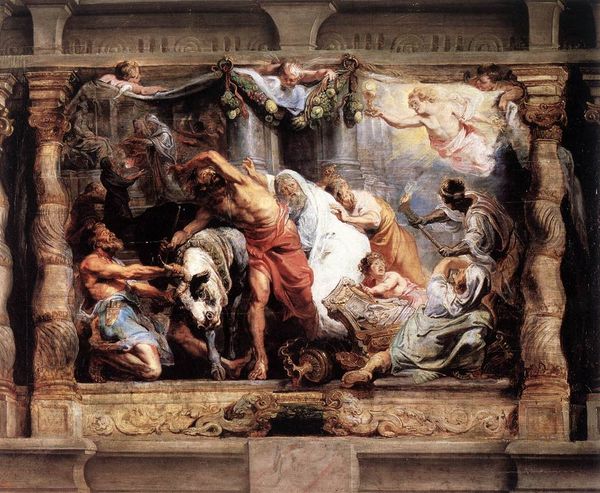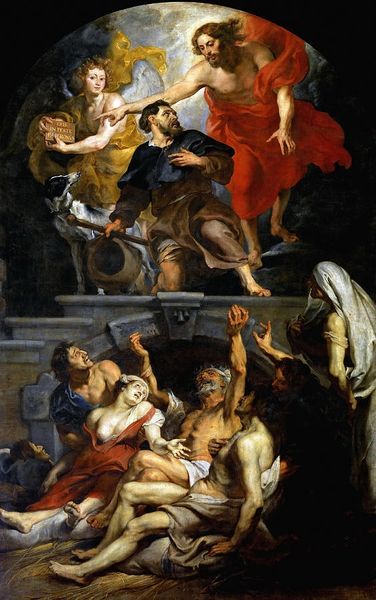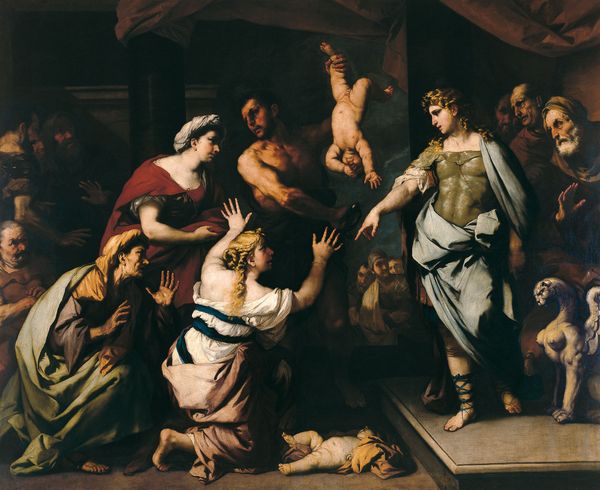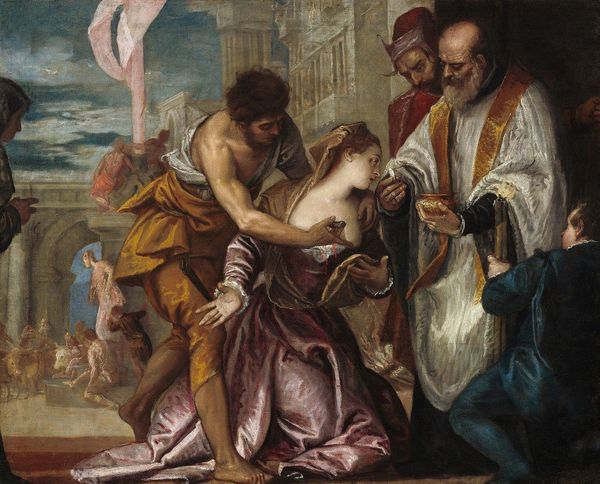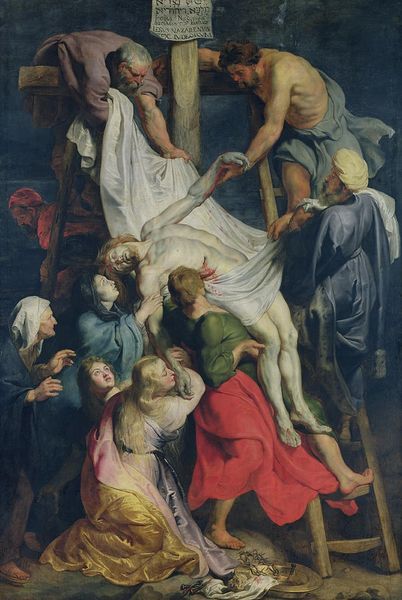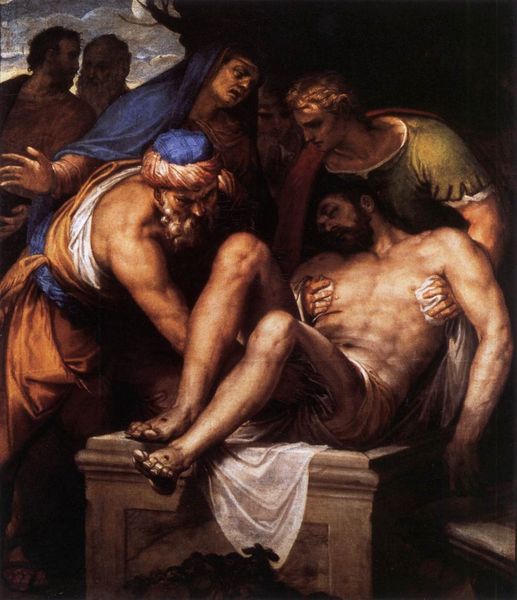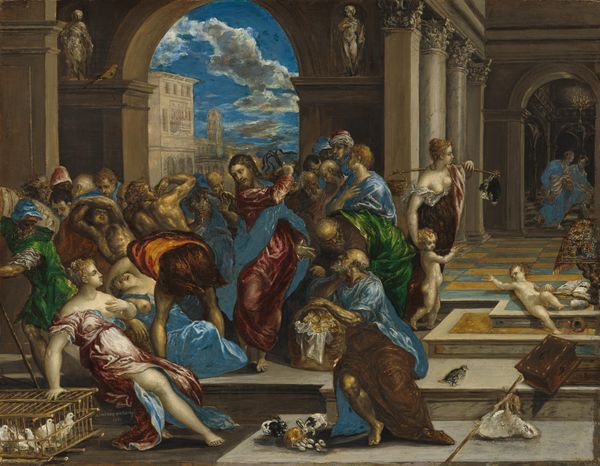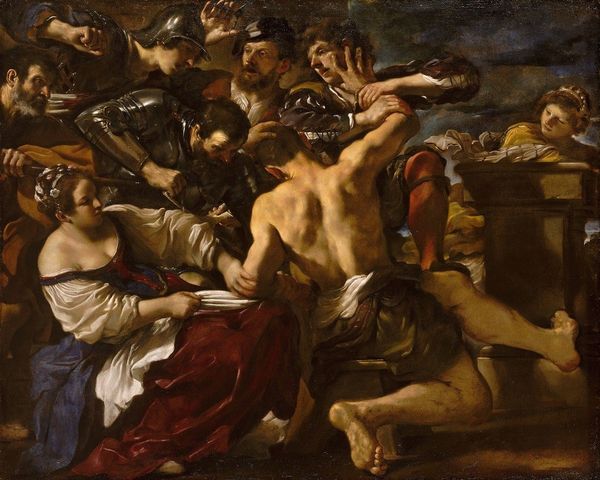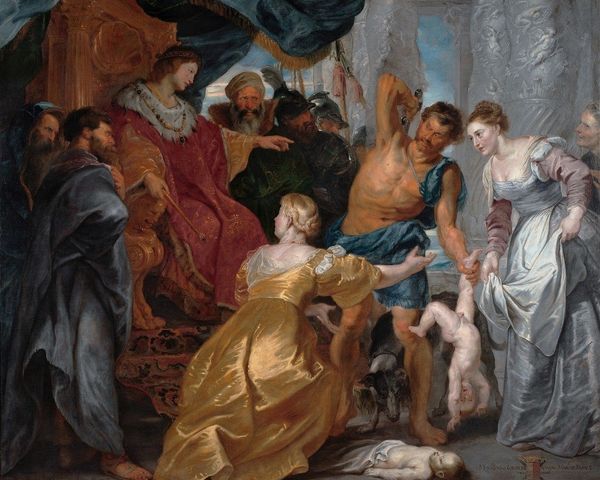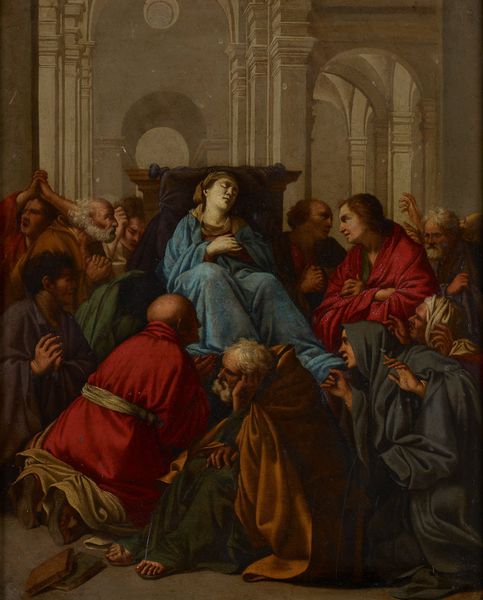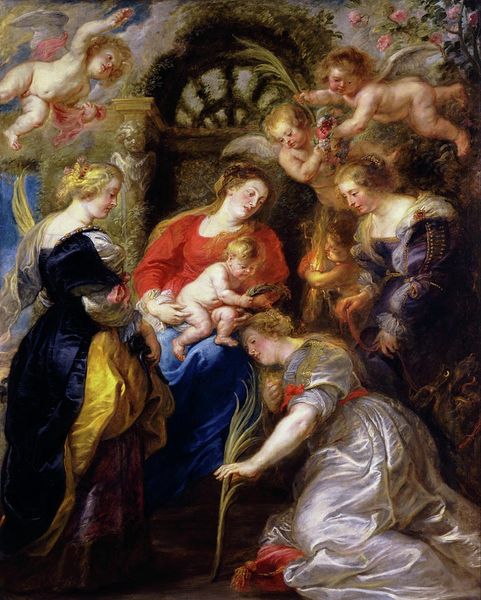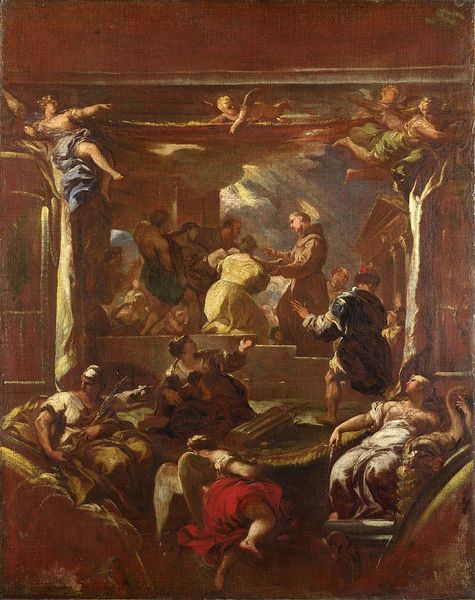
oil-paint
#
narrative-art
#
baroque
#
oil-paint
#
figuration
#
oil painting
#
mythology
#
history-painting
Copyright: Public domain
Curator: This compelling piece is Peter Paul Rubens's "The Death of Achilles," painted around 1630. You can find it in the collection of the Museum Boijmans Van Beuningen. The grand scale is rather imposing. What strikes you first? Editor: Well, it is dominated by a central collapse, isn't it? A dramatic fall from grace, quite literally. The muted palette against the opulent gold almost feels theatrical. Curator: Absolutely, Rubens masterfully employs Baroque theatricality here. He draws on the classical narrative of Achilles, the near-invincible Greek hero. We see him here not as a warrior but at his most vulnerable. The politics inherent in displaying the great felled by such a 'small' agent. Editor: The arrow of Paris… yes. Look at how that arrow almost becomes an emblem of fate, an instrument that exposes the hero's one weakness. It feels almost unfair, given how Achilles has loomed so large in the Western canon. But it does introduce this persistent fear we have in our civilization with death. Curator: Indeed. Rubens is keen to convey this tragedy but through a distinct political lens of the time. A hero may fall and only the powerful may be present at his death... His works reflected the world he engaged with as diplomat and powerful artist. Editor: And Rubens amplifies that sentiment with those symbolic embellishments, doesn't he? That striking black snake on the golden altar - so visually compelling, even alluring! It represents deception, poison... all the more heightened as it surrounds what should be an object of worship. Curator: Rubens was keenly aware of symbolic language, shaping the message of his historical pieces for a specific patron and public. He makes no coincidences, embedding layers of socio-cultural meaning, the price one pays when upsetting Gods is absolute destruction of the body and reputation. Editor: So it's more than just a moment of individual tragedy but a wider societal lesson being conveyed in oil. A way for a society to process power and invincibility to prevent an uncontrolled arrogance and power by it's leading class. The power of art to give context and direction. Curator: Precisely! Rubens' "Death of Achilles" isn't just a pretty picture but a critical commentary. The painting, much like Achilles' life, still echoes profoundly in the halls of art and history today. Editor: Leaving us with the unsettling recognition that even heroes, symbols, and regimes will collapse in their moment of fate.
Comments
No comments
Be the first to comment and join the conversation on the ultimate creative platform.
